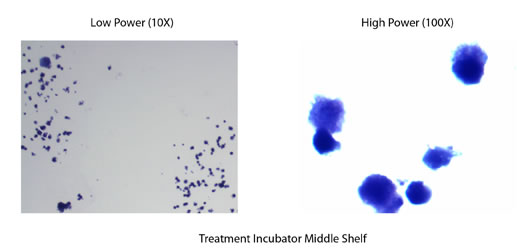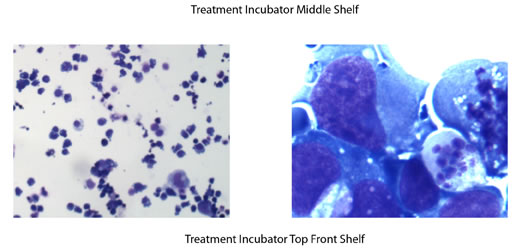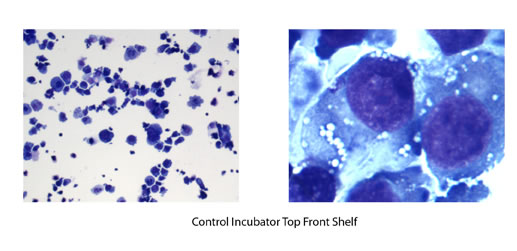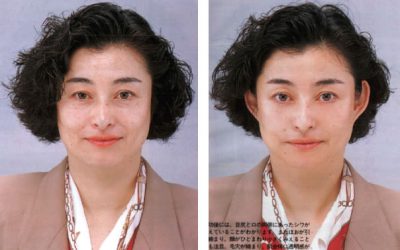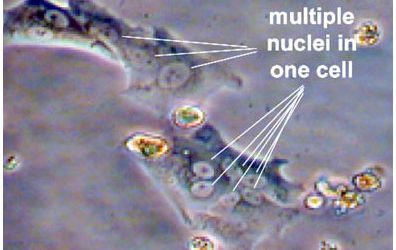Subject
Penn State University School of Medicine Laboratory
Date
Started on November 2, 2007
Project information
Chair: Professor John E. Neely MD, Pediatric and Cancer Specialist
Description: In this experiment, Dr. Neely chose UT-7, which is a type of leukemia cell to be placed in the bottle of the incubator. The laboratory has two incubators, one for the treatment and the other for the control. There are three shelves in each incubator. Two culture flasks are placed on the upper shelf, one on the left rear (1A) and one on the right front (1B). There is a bottle in the middle (1C) and lower (2A) on the right front. After the experiment started, Mr. Jixing Li transmitted energy from Mountain View, in the bay area of California, at a long distance (about 4,500 kilometers), causing structural degeneration of the cancer cells in the treatment incubator, which either accelerated the death of the cells or the cells no longer had the original cancer cells characteristics. The cancer cells in the control box were allowed to grow naturally. Mr. Li has never been to the Pennsylvania State University laboratory, and he does not know the exact location of the laboratory.
Mr. Li used two different energy methods to change the properties of the original cell, one can shorten the life of the cell to accelerate death, and the other can extend the life of the cell to make it healthy and full of vitality.
During the experiment, the growth of cancer cells in each group was regularly monitored and recorded. At the beginning, the growth rates in the two incubators were similar. Beginning the 17th day, the cell survival rate in the 1C bottle in the treatment incubator dropped sharply to less than 10%, and all died in the end. At the same time the average number of cancer cells in each bottle in the control incubator had reached more than 140 million.
In the treatment incubator 1A, 1B and 2A, in the subsequent experiments, many rare specific multinucleated cells appeared, and the number of cells continued to increase, showing that not only the nature of the cells has changed, but also the cells are full of vitality. When the number of cancer cells in each bottle in the control box grew to 160 million, the cell growth diminished due to insufficient nutrition, yet the number of 1A cells in the treatment incubator grew to as much as 400 million in just one month, more than doubled the control box. This is a phenomenon that the cancer specialists have never seen before and cloud not explain. This phenomenon that can change the structure of cells and enhance their vitality is a major breakthrough in biology. It means the birth of new technologies in human biological engineering, and it also provides the scientific basis for our rejuvenation method. Many unique multinucleated cells from the experiment were frozen and stored for further research.
Achievement Category
- Key Scientific Achievements
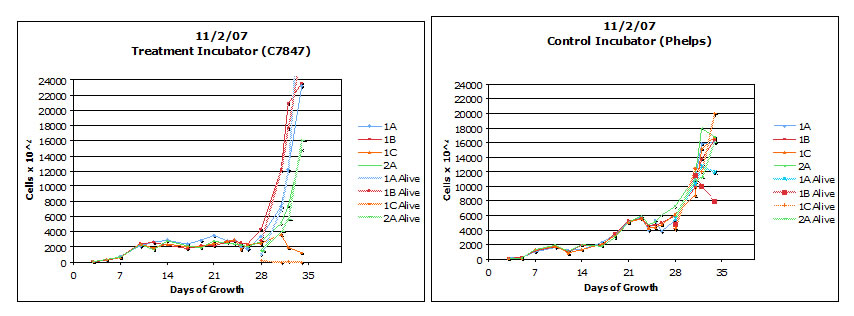
Charts and photos courtesy of Penn State University Children's Hospital Laboratory
